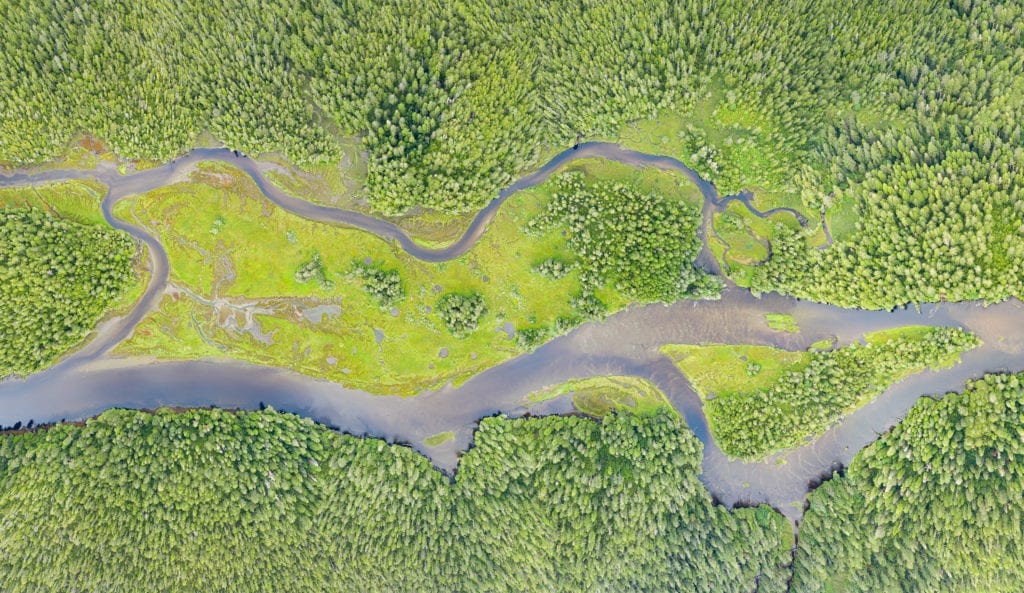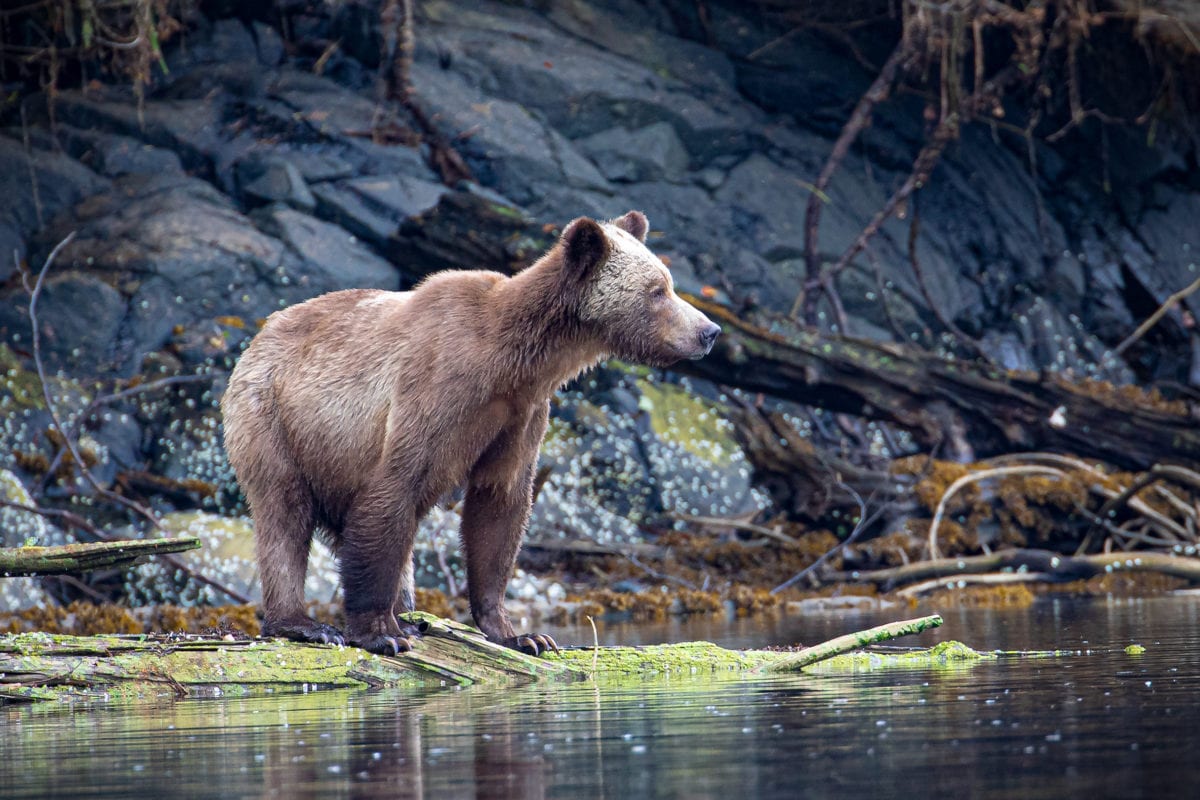
While conducting monitoring work for the BCSRIF Enhancing Estuary Resilience Project, Restoration Biologist Steve Henstra kept notes on the sights and sounds of the incredible Koeye River Estuary. The following story shares his recollections from the trip.
The story begins when our team was granted permission to enter Heiltsuk territory by the Heiltsuk Emergency Operations Centre (EOC), but due to COVID-19, we were not able to work with the Heiltsuk Guardians in the field this time around. Markus Thompson and I completed the work together as we are in a COVID “work pod” together.
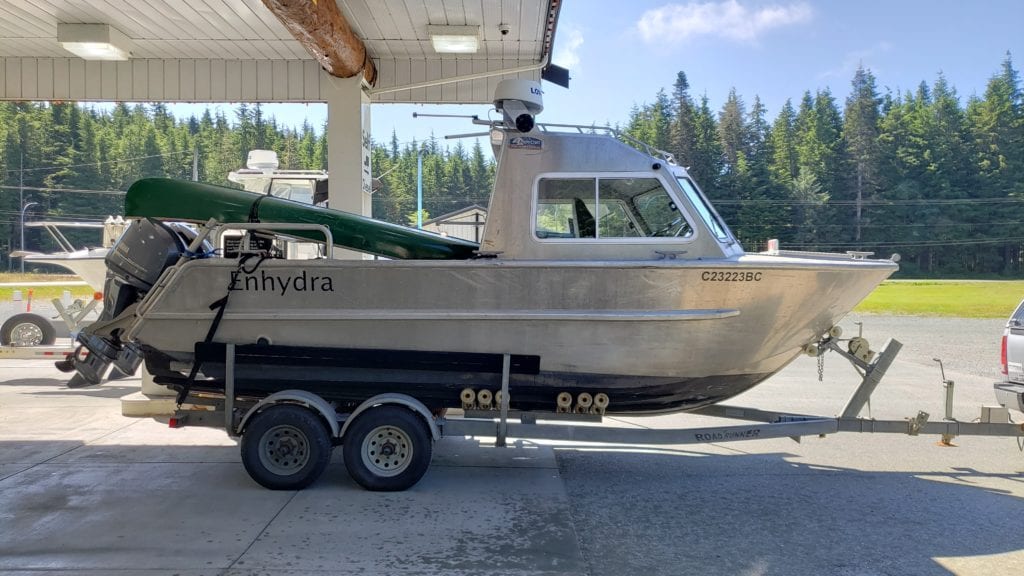
Fueling up Enhydra for the trip
August 4
We drove up to Port Hardy early in the morning, trailering Enhydra, our contract boat for the BCSRIF project. We boat from Port Hardy to the Hakai Institute on Calvert Island. The water is flat calm, but thick belts of fog have settled over the water for our journey. Port Hardy itself is enveloped in a thick fog as we worked to replace the buoy-mounted turbidity logger in the Quatse River estuary on our way out of the harbour. Salmon were jumping in the inlet as recreational fishers casted lines from their boats.
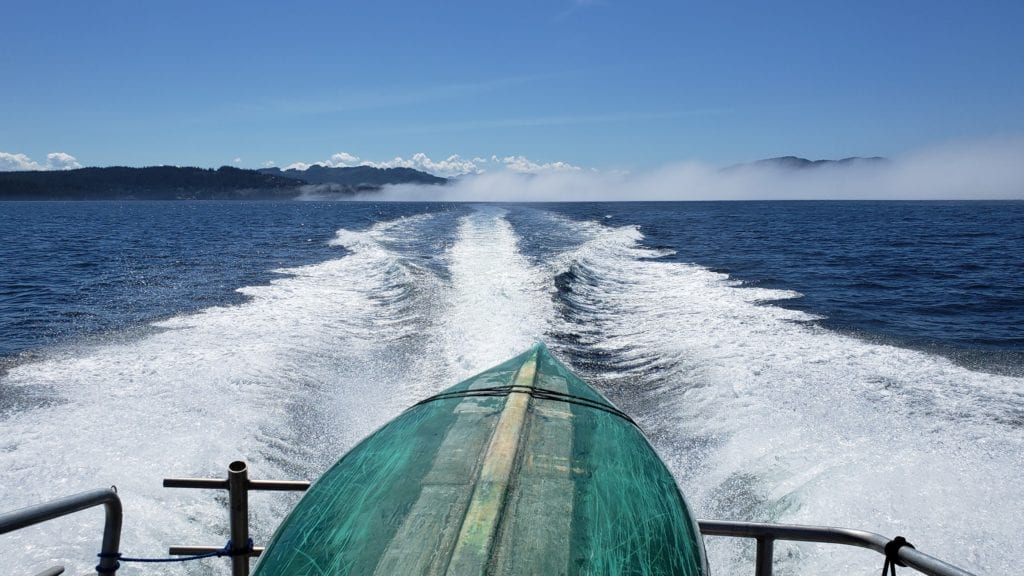
Boating north from Port Hardy – obscured by a fog bank
As we got underway, we coasted along the glassy water through the fog, piloting the boat by GPS and radar, while keeping a watchful eye out for logs and other floating debris. We made our way north up the coast past Balaklava Island, interrupting the occasional seabird’s lunch as we travelled. As we passed Rivers Inlet and entered Fitz Hugh Sound between the mainland and Calvert Island, the fog dissipated, revealing beautiful views of the many small forested islands to the east.
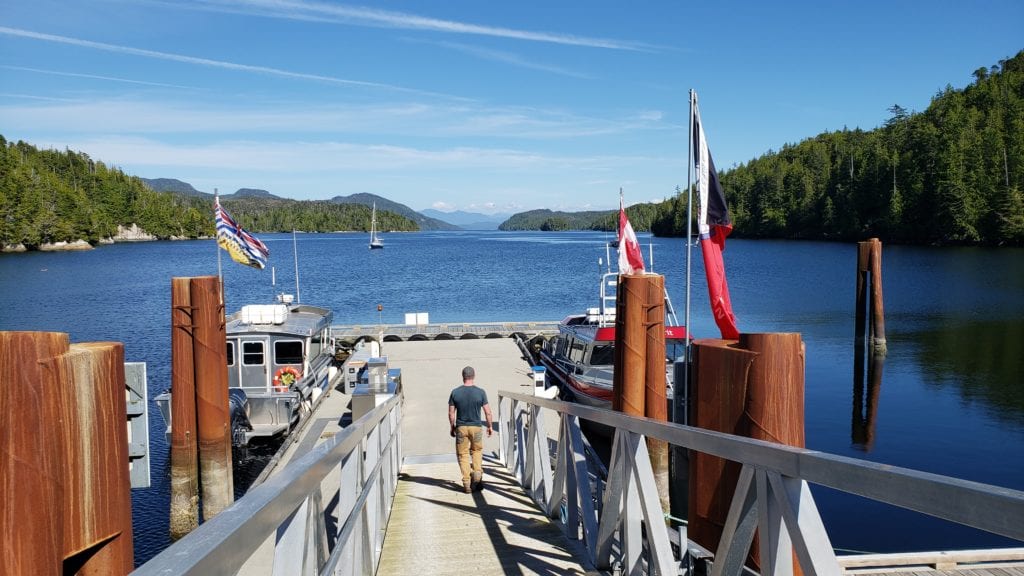
Hakai dock on Calvert Island – facing east into the Kwakshua Channel
As we approached the Kwakshua Channel – the deep water inlet between Calvert Island and Hecate Island leading to the Hakai Institute’s location – we saw two Humpback whales spouting and taking deep breaths to dive. We radioed our impending arrival and docked at Hakai’s main dock. We were given a facility orientation and discussed NTBC’s and Hakai’s COVID-19 work protocols.
August 5-7
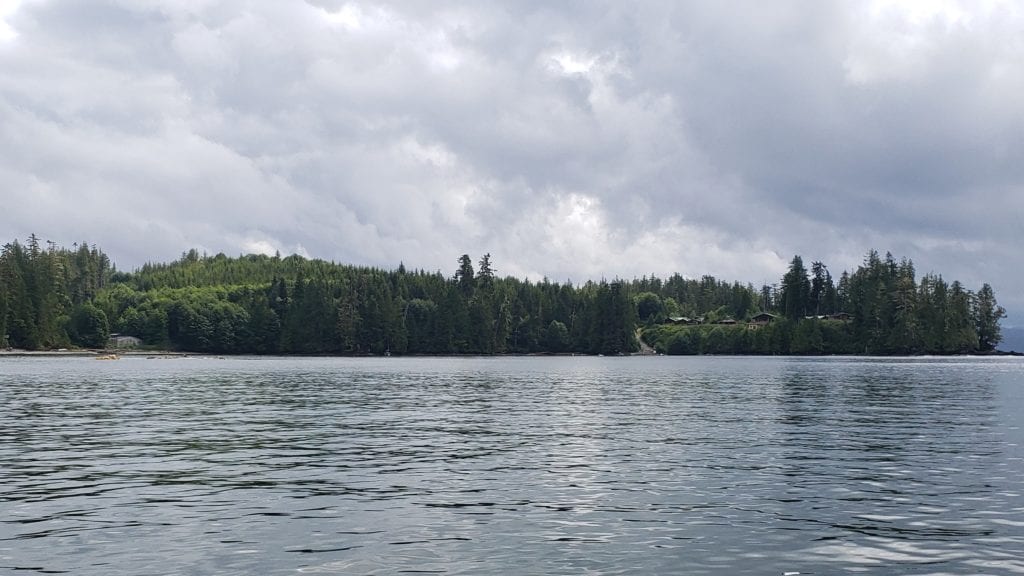
The Heiltsuk Koeye Camp at the mouth of the Koeye River. The bighouse, Dhadhixsistala, is visible on the beach to the left.
We started work early each morning to boat north through Meay Inlet and across Fitz Hugh Sound to the Koeye River. We left early to beat the dropping tide, as we could boat up river with Enhydra a distance before anchoring and switching to canoe.
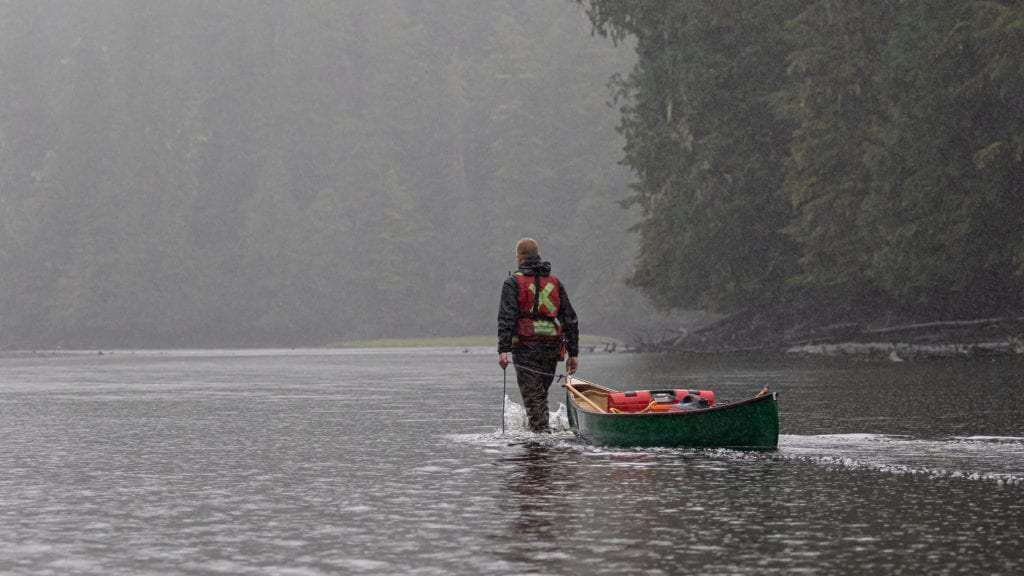
Hiking the canoe packed with equipment at low tide
The Koeye River is a very special place, with a deep history in Heiltsuk culture. It is a large watershed that remains unlogged, and it abounds with wildlife. The Heiltsuk have built and operate the Koeye Camp, a youth science and cultural camp, at the entrance to the Koeye River.
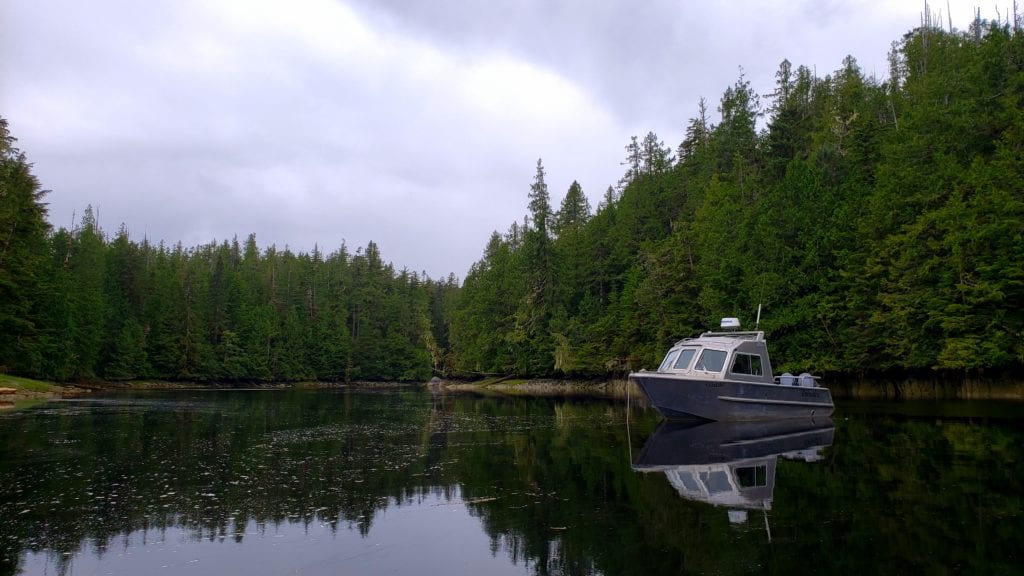
Enhydra anchored in the Koeye River. Approaching by canoe.
Throughout the trip, as is typical for the central coast, there were periods of driving rain, with short periods of sun poking through the misty air. We installed our monitoring equipment and took measurements and downloaded data from previously installed instruments. Salmon were just starting to run, with fish jumping periodically.
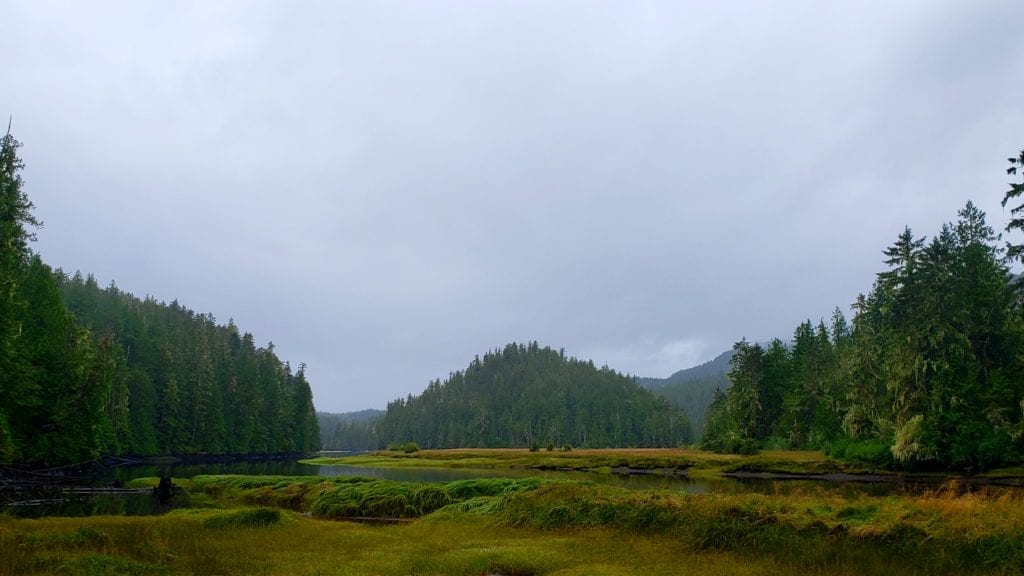
The beautiful estuary salt marsh
We saw several grizzly bears fishing the river, including a sow and two cubs, who we saw daily. The cubs frolicked and made a racket on the bank opposite to us while their mother fished. We watched her pull several salmon from the river.
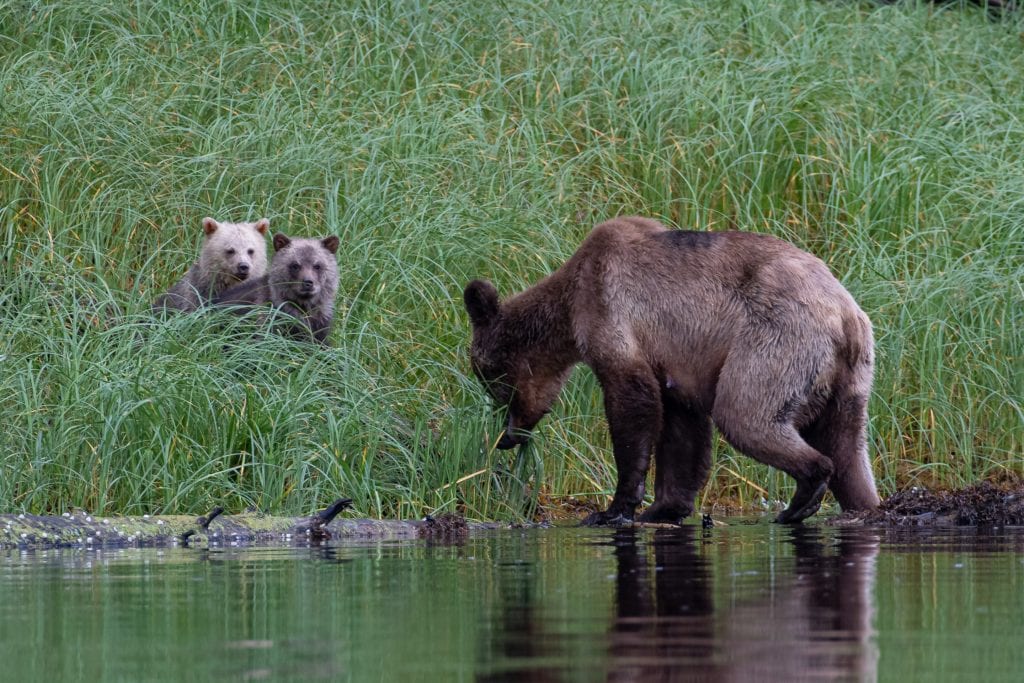
The Grizzly sow and two cubs foraging along the riverbank
We saw countless eagles, both mature and juvenile, along the river. Kingfishers fought for fishing territory and dove into the shallow waters. A family of River otters fished and retreated back onto shore as we canoed by.
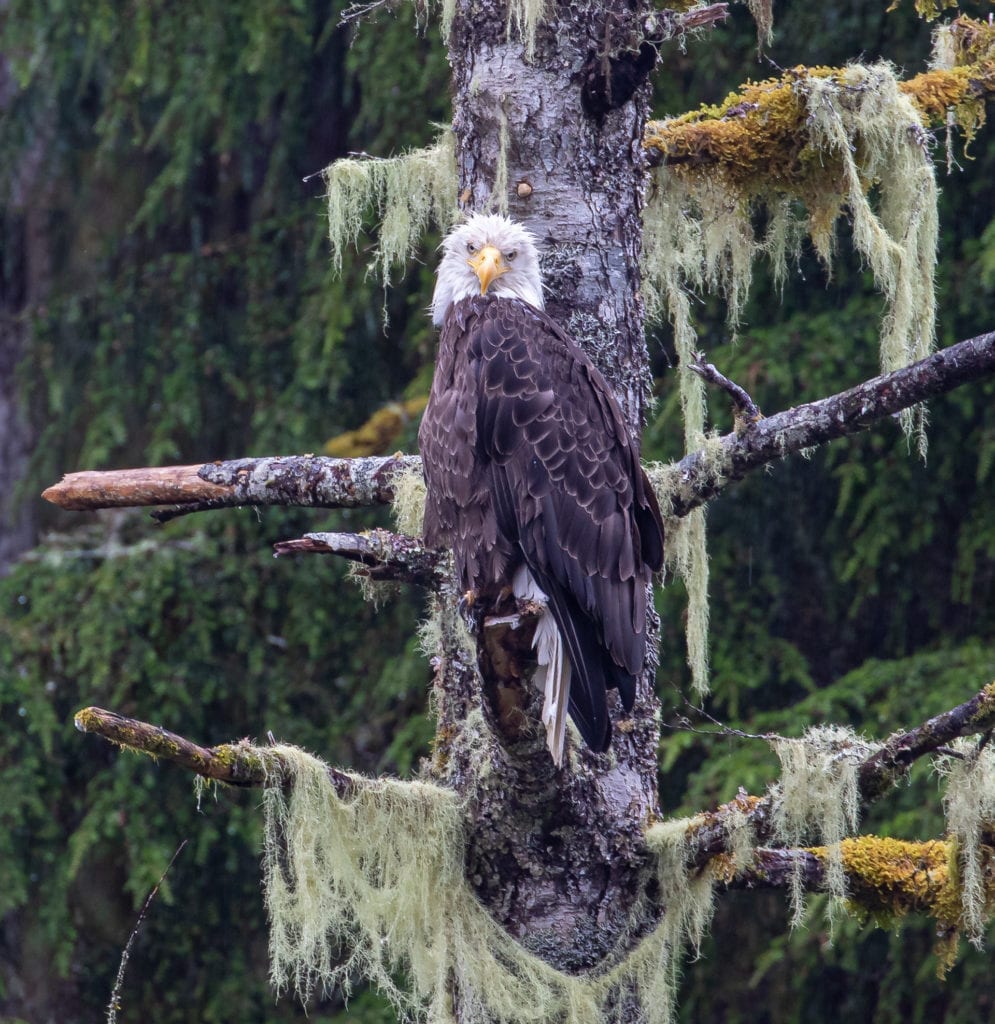
An eagle watches us as we pass
August 8
After a wonderful trip and a welcoming, comfortable stay at the Hakai Institute, we boated back to Port Hardy. The weather was again calm and we made good time returning to Vancouver Island. We had an epic trip and felt very fortunate to be able to access a place as special as the Koeye River estuary.
